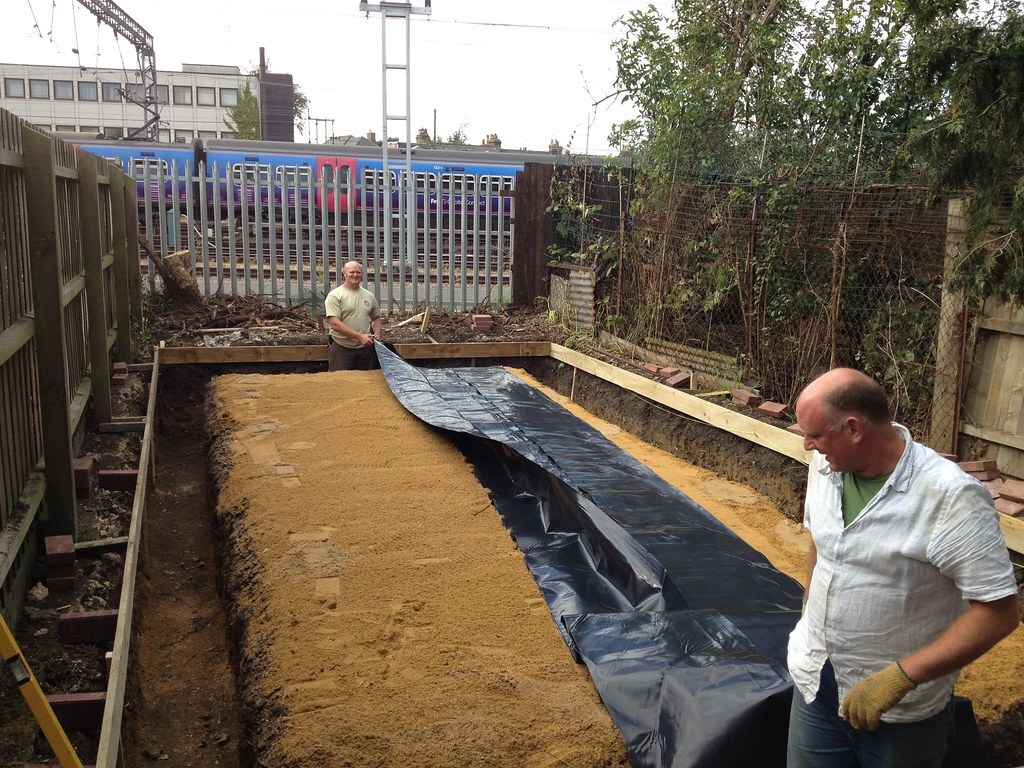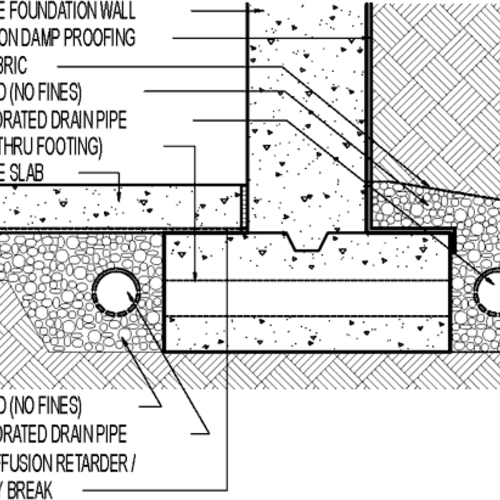Addressing condensation problems for good with mould treatment newcastle
Addressing condensation problems for good with mould treatment newcastle
Blog Article
Discovering the Various Methods and Solutions for Effective Damp Proofing
Wetness in structures poses significant difficulties to both architectural integrity and indoor air quality. Numerous techniques and services have arised to fight this pervasive concern. From traditional damp-proof membranes to innovative chemical therapies, each technique supplies special advantages. Recognizing these alternatives is vital for effective moisture control. Nonetheless, choosing the ideal option relies on details structure problems and requirements, triggering additional exploration into one of the most effective damp proofing techniques available.
Understanding the Reasons For Moisture
Wetness can develop from different sources, recognizing these causes is crucial for efficient removal. Commonly, wetness originates from 3 main resources: increasing moist, penetrating wet, and condensation. Rising wet occurs when groundwater takes a trip up-wards via permeable materials, such as block or stone, often as a result of a lack of a reliable barrier (mould removal newcastle). Penetrating moist is typically triggered by external variables, including roof leakages, damaged gutters, or damaged wall surfaces, allowing water to infiltrate a residential or commercial property. Condensation, on the various other hand, results from excess moisture in the air, typically intensified by bad ventilation and temperature differences, causing water droplets basing on surface areas. Identifying these underlying issues is vital, as each kind of dampness needs a tailored technique for removal. Proper evaluation helps in figuring out one of the most reliable remedies, inevitably protecting the structural honesty of a building and enhancing indoor air high quality
Standard Damp-Proof Membrane Layers

Chemical Damp-Proofing Solutions
Chemical damp-proofing options provide an innovative approach to stop wetness breach in buildings. These methods commonly include the application of fluid chemicals that permeate masonry and form an obstacle against rising moist. Typically made use of chemicals include silanes, siloxanes, and other water-repellent representatives that respond with surface products to create a hydrophobic layer.The application process normally calls for drilling openings right into the walls, injecting the chemical remedy, and permitting it to cure. This technique is specifically useful for older structures where conventional damp-proof membranes may be unwise. Chemical damp-proofing can be much less turbulent and much more affordable than substantial improvement projects.While reliable, these options depend on appropriate application and environmental conditions for peak performance. mould treatment newcastle. Routine maintenance and tracking are vital to ensure the longevity of the damp-proofing treatment. In general, chemical damp-proofing represents a versatile option for guarding structures against moisture-related damage
Tooth Cavity Wall Surface Building Methods
Cavity wall surface building techniques supply countless advantages, particularly in dampness control and energy performance. By integrating an air gap in between 2 layers of masonry, these wall surfaces successfully mitigate water access while enhancing insulation. This mix not only secures frameworks from moisture however likewise adds to minimized power consumption.
Advantages of Cavity Wall Surfaces
When considering effective moist proofing approaches, the benefits of tooth cavity walls stand apart prominently. Tooth cavity wall surfaces contain two different layers, creating an air gap that efficiently decreases moisture penetration. This style decreases the risk of dampness, as the outer wall functions as a barrier against rain and water ingress. Additionally, cavity walls improve thermal insulation, which adds to power efficiency by minimizing warmth loss. They also give sound insulation, helping to produce a quieter interior setting. Furthermore, the air void allows for ventilation, which assists in moisture control and minimizes the chance of mold growth. These advantages not only improve the general convenience of a building yet likewise contribute to its longevity and structural integrity.
Moisture Control Strategies
Efficient dampness control approaches are essential in dental caries wall surface building and construction to assure long-term protection versus moisture. One main approach entails the consolidation of weep openings, which help with water drain from the tooth cavity, preventing buildup. In addition, using breathable membranes can assist manage wetness degrees while allowing caught vapor to escape. Appropriate positioning of insulation is additionally important, as it needs to not block drainage paths. In addition, guaranteeing that the external leaves of the tooth cavity wall are constructed with waterproof materials boosts total sturdiness. Normal maintenance checks are necessary to recognize any type of obstructions or damage early, protecting the framework's integrity. Ultimately, a combination of these techniques forms a robust defense against moisture intrusion in tooth cavity wall surfaces.
Insulation and Power Effectiveness
Insulation plays a crucial duty in boosting power effectiveness within tooth cavity wall surface building and construction. By including shielding products, these wall surfaces produce a thermal obstacle that reduces warm loss and lowers power intake. Efficient insulation not only helps maintain a stable interior temperature level yet likewise alleviates the danger of dampness, as it prevents condensation within the wall surface dental caries. Different methods, such as using inflexible foam boards or mineral wool, can be employed to attain excellent insulation efficiency. Additionally, proper installment is important to guarantee that voids and spaces are lessened, which can otherwise endanger energy efficiency. Inevitably, a well-insulated cavity wall adds significantly to total sustainability and lowers home heating and air conditioning prices for house owners.
External Damp Proofing Approaches
Outside wet proofing techniques are important for shielding structures from dampness seepage. 2 reliable techniques consist of the application of waterproof membranes and the installment of French drains pipes. These options assist reduce water build-up and maintain the integrity of structures.
Waterproof Membrane Layer Application
While various techniques exist for preventing wetness ingress, the application of water resistant membranes stays a very efficient exterior wet proofing technique. These membrane layers are commonly made from materials such as polyethylene, rubber, or modified asphalt, offering a durable obstacle against water penetration. The installment process involves using the membrane layer to the outside surface areas of foundations or walls, guaranteeing total protection to stop leaks. Appropriate adhesion and sealing at joints are important to optimizing performance. Waterproof membrane layers can be used in numerous kinds, consisting of fluid coatings and sheet membranes, enabling flexibility based upon the particular demands of the structure. This method not only shields structures from wetness however likewise improves their durability and structural integrity.
French Drainpipe Setup
One reliable technique for handling groundwater and avoiding moisture accumulation around a structure's structure is the setup of a French drain. This drainage system is composed of a trench loaded with gravel and a perforated pipeline that reroutes surface water away from the foundation. Correct installment needs careful planning, ensuring that the drain inclines away from the structure to help with optimal water flow. Additionally, the area of the drainpipe is important; it should be positioned in areas susceptible to pooling or excess dampness. Routine maintenance, consisting of clearing particles from the crushed rock and guaranteeing the pipeline continues to be unblocked, is important for long-term efficiency. Inevitably, a well-installed French drain can considerably decrease the danger of water-related issues in cellars and foundations.
Inside Waterproofing Strategies
Interior waterproofing approaches are important for shielding a building's interior from wetness seepage and prospective water damages. These techniques typically include the application of customized products and techniques created to develop a wetness obstacle within the structure. One usual method is the use of waterproof finishes or sealants on wall surfaces and floorings, which stop wetness from permeating surfaces.Additionally, setting up interior drainage systems, such as sump pumps, can properly manage water build-up in cellars and creep spaces. An additional technique entails the use of vapor barriers, which are mounted to prevent wetness movement from the ground into living spaces.Moreover, dealing with any type of splits or gaps in walls or foundations with suitable sealers assures a comprehensive defense against water breach. By implementing these interior waterproofing strategies, homeowner can significantly decrease the risk of mold development, structural damage, and various other moisture-related concerns. Appropriate execution of these techniques is vital for long-lasting protection and structure honesty.
Routine Maintenance and Evaluation Practices
Regular upkeep and inspection practices are important for guaranteeing the lasting performance of moist proofing solutions in any kind of building. Routine checks make it possible for property proprietors to identify very early indications of moisture breach, such as peeling paint, mold and mildew growth, and moldy smells. These signs can signal underlying concerns that need prompt attention.Inspections must be conducted at the very least annually, concentrating on vulnerable areas like cellars, crawl rooms, and exterior walls. During these evaluations, residential property proprietors need to examine sealants, water drainage systems, and ventilation to verify they work correctly.Additionally, preserving seamless gutters and downspouts is crucial, as blocked systems can cause water accumulation near the foundation. Carrying out a normal maintenance timetable, along with timely repair services, can substantially extend the lifespan of moist proofing actions and protect the structural stability of the structure. Aggressive steps eventually add to the overall health and wellness of the living environment.
Regularly Asked Questions
The Length Of Time Does Damp Proofing Generally Last?
The duration of wet proofing effectiveness differs, commonly lasting in between 20 to half a century. Aspects such as application quality, environmental problems, and upkeep techniques considerably affect the longevity of the damp proofing treatment.

Can I Damp Proof My Home Myself?
The individual contemplated the expediency of DIY damp proofing. With appropriate research and the right products, it is feasible. They additionally identified the value of expert assistance to guarantee long-lasting performance and protect against future problems.
What Are the Signs of Ineffective Damp Proofing?
Signs of inadequate moist proofing include persistent stuffy smells, visible mold growth, peeling off paint, damp spots on wall surfaces, and wood decay - mould removal newcastle. House owners ought to deal with these issues promptly to stop more damages and health and wellness issues
Does Damp Proofing Affect Indoor Air Quality?

Just How Much Does Expert Damp Proofing Price?
Expert wet proofing costs vary considerably, generally varying from $1,000 to $5,000 depending upon the home's dimension, the extent of the moist issue, and selected methods. Each website scenario requires a tailored evaluation for exact prices. Commonly, moisture stems from 3 key sources: climbing damp, penetrating wet, and condensation. When taking into consideration effective damp proofing techniques, the advantages of tooth cavity wall surfaces stand out plainly. Exterior wet proofing approaches are vital for shielding frameworks from dampness seepage. While numerous methods exist for avoiding dampness access, the application of water resistant membrane layers continues to be a very reliable exterior wet proofing strategy. Indicators of inadequate wet proofing consist of relentless stuffy smells, noticeable mold development, peeling paint, moist spots on wall surfaces, and wood decay.
Report this page